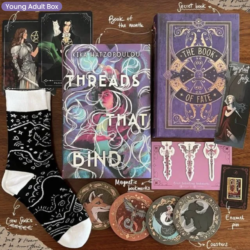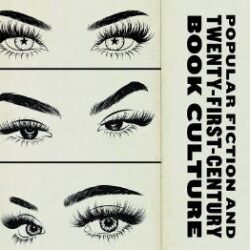No matter the time or place, the ownership of books has functioned not only as a point of access to texts, but also as a status symbol. There are many ways books can convey that status, including their material characteristics as determined by their makers. A revealing case study of this principle is the rise of FairyLoot, a subscription-based publisher of “exclusive editions,” and how it relates to earlier subscription based “made-collectible” models, like that of the Franklin Library. In short, companies like FairyLoot are this generation’s version of the Franklin Library. The same marketplace principles apply—but because the audience is different, the end result of the manufactured object also differs. What brings these seemingly disparate companies together is their shared strategy of creating books with physical attributes that read to their target audience as “collectible.”
Tag: publishing
Kim Wilkins, Beth Driscoll, and Lisa Fletcher. Genre Worlds: Popular Fiction and Twenty-First-Century Book Culture.
In 2017, I reviewed Jeremy Rosen’s exploration of genre and late 20th/21st century publishing in Minor Characters Have Their Day for SHARP News. So it seems only fitting that 5 years later I have the opportunity to review Genre Worlds: Popular Fiction and Twenty-First-Century Book Culture by Kim Wilkins, Beth Driscoll, and Lisa Fletcher. Genre Worlds is a more expansive examination of genre in popular fiction than the work of Rosen and many others, and provides an important framework for the study of genre fiction. Genre Worlds follows an organizational structure that addresses the theory of genre worlds, relationship to the publishing industry, transnational and transmedia genre worlds, community and creativity, genre sociality (online and in-person), the texts themselves, concluding with genre worlds and change.
Simon Rowberry. Four Shades of Gray: The Amazon Kindle Platform.
Users of hardware such as the Kindle tend to have a preferred format, sometimes refusing to replace the device until it has completely gone beyond the point of use. This is just one of the phenomena that Simon Peter Rowberry hits on in his book Four Shades of Gray: The Amazon Kindle Platform (a nod to the greyscale used in the first Kindle back in 2007) as he delves into the inner workings of the Kindle, both as a platform and a larger tool in the Amazon ecosystem. This work balances the line in giving the reader valuable technical information, but remaining readable to most of the scholars, students, and publishers who will find merit in this book.
Penguin Book Vending Machines
I’ve had a long-held interest in Penguin’s infamous Penguincubator, and bookshops more generally, and saw an opportunity to combine both for a couple of conference papers this year. And then – on the 24th March, my inbox and social media feeds started to light up. A new Penguin books vending machine had been installed at Exeter railway station, and people were extremely excited. And I mean, extremely excited. Suddenly, I was trying to process all the pictures being posted, comments logged, and articles written: I wanted to use the research to highlight some of the challenges of pursuing bookselling histories, but I hadn’t anticipated this would become such a timely tie-in with what Penguin were doing.
G. Thomas Tanselle, Descriptive Bibliography.
Descriptive Bibliography embodies G. Thomas Tanselle’s lifelong dedication and significant, enviable contributions to the discipline; and its content amounts to a cornucopia of bibliographical delights for those seeking to learn, reinforce or revisit what descriptive bibliography is and its “role as history and biography” (page 28), such as from aspiring higher-degree students, early- to mid-career scholars, to researchers from adjacent disciplines, such as library cataloguing, whose work exists tangentially to, or intermixes with, that of bibliographers. The book’s objective to “offer a comprehensive guide to descriptive bibliography” (page ix), though limited to printed books, is without doubt (and, given the author, predictably) achieved.





